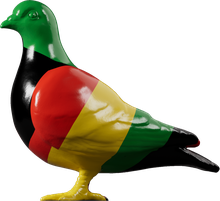Post-Medieval — C. 1673; 17th century
Strapwork matrix for gorge
In 1672, John Dwight set up a pottery in Fulham. He became the first Englishman to make stoneware, produced by firing clay at very high temperatures. He copied ‘Cologne ware’, a German stoneware that was imported into England. In 1676, the Glass Sellers’ Company agreed to buy the whole of his stoneware production for three years. In the 1970s, excavations at Fulham revealed the extent of Dwight’s wares and experiments.
This is a well fired barrel-shaped mould of un-glazed white Fulham stoneware. It has an incised double-strip design which was used on Westerwald-style gorges. The design was incised at the leather-hard stage and since this mould is impermeable, it probably had limited practical use. The mould was dumped in a pit adjacent to the kilns as early as 1673 after a short period of use as kiln furniture. No sherds bearing this design have been found.
- Category:
- Post-Medieval
- Object ID:
- 97.90/11
- Object name:
- Strapwork matrix for gorge
- Artist/Maker:
- Fulham Pottery, Dwight, John
- Related people:
- Related events:
- Related places:
Fulham, London [Hammersmith and Fulham], Hammersmith and Fulham
- Production date:
- c. 1673; 17th century
- Material:
ceramic, stoneware
- Measurements/duration:
- L 140 mm, D 59 mm, H 46 mm (overall)
- Part of:
- —
- On display:
- —
- Record quality:
- 100%
- Part of this object:
- —
- Owner Status & Credit:
Permanent collection
- Copyright holder:
digital image © London Museum
- Image credit:
- —
- Creative commons usage:
- —
- License this image:
To license this image for commercial use, please contact the London Museum Picture Library.

